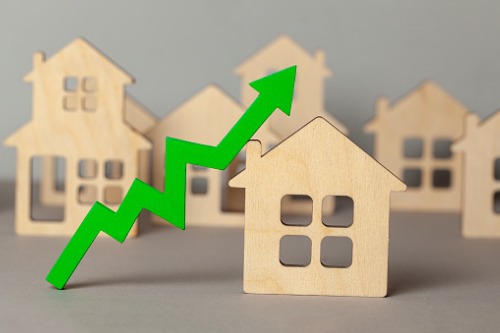Home prices are up in the vast majority of markets across the country, dealing a blow to potential homebuyers searching in the most affordable price points

Single-family median home prices increased year-over-year in 91% of measured markets in the second quarter, according to the latest quarterly report from the National Association of Realtors (NAR).
The median price for a previously owned single-family house increased 4.3% from a year earlier to $279,600. Prices climbed in 162 of 178 metropolitan areas measured, up from the 86% share in the first quarter of 2019.
Meanwhile, there was only marginal growth in inventory, which Lawrence Yun, NAR chief economist, says is behind tightening conditions.
“New home construction is greatly needed, however home construction fell in the first half of the year,” he said in the report. “This leads to continuing tight inventory conditions, especially at more affordable price points. Home prices are mildly reaccelerating as a result.”
Different story for highest markets
The five most expensive housing markets in the second quarter were the San Jose-Sunnyvale-Santa Clara, Calif., metro area, where the median existing single-family price was $1,330,000; San Francisco-Oakland-Hayward, Calif., $1,050,000; Anaheim-Santa Ana-Irvine, Calif., $835,000; Urban Honolulu, Hawaii $785,500; and San Diego-Carlsbad, Calif., $655,000.
In expensive metro areas where the median prices were $500,000 and above, the single-family median prices declined when compared to the levels of one year ago. The costliest area, San Jose-Sunnyvale-Santa Clara, Calif., saw a 5.3% drop. Next in line was San Francisco-Oakland-Hayward, Calif., whose decline was 1.9%. Homes in urban Honolulu, Hawaii dropped by 1.2%, followed by Boulder, Colo., which saw a 0.9% slide. Bridgeport-Stamford-Norwalk, Conn., recorded single-family housing prices that were slightly down (0.6%) from last year, possibly due to limits on property tax deductions.
In addition, other expensive metro areas experienced home price increases, although they were fairly modest. These areas include Anaheim-Santa Ana-Irvine, Calif., which rose only 0.6%. Home prices in Los Angeles-Long Beach-Glendale, Calif., saw a 1.8% gain, while San Diego-Carlsbad, Calif., saw a 1.6% price increase.
These dips in some of the costliest US markets could be a sign that would-be buyers are sitting out the competition for a scarcity of affordable properties. Plenty of buyers are willing to stretch their budgets somewhat, but as wages haven’t been keeping pace with other markers—such as housing—there’s a limit to the amount of stretching that’s possible. In some of the costliest markets, sellers are having to cut prices to make a sale.
In the most expensive metro areas in the West, families seeking to avoid paying no more than 25% on mortgage payments saw steep requirements for median household income. San Jose home buyers would need $295,832, while buyers in San Francisco would need $233,552.
Affordable but unavailable
Recent data from Black Knight indicates that housing affordability is the highest its ben since 2017. Still, the supply of lower-end properties remains tight in many areas across the country, which has prevented buyers from being able to take advantage of that affordability.
“Housing unaffordability will hinder sales irrespective of the local job market conditions,” Yun said in the report. “This is evident in the very expensive markets as home prices are either topping off or slightly falling.”
The five lowest-cost metro areas in the second quarter were Decatur, Ill., $97,500; Youngstown-Warren-Boardman, Ohio, $107,400; Cumberland, Md., $117,800; Binghamton, N.Y., $119,300; and Elmira, N.Y., $119,400.
A national tale
National family median income is estimated to have risen to $78,3662 in the second quarter, but greater home price growth contributed to an overall decrease in affordability from last quarter. A buyer making a 5% down payment would need an income of $62,192 to purchase a single-family home at the national median price, while a 10% down payment would necessitate an income of $58,918, and $52,372 would be required for a 20% down payment.
At the end of 2019’s second quarter, 1.93 million existing homes were available for sale, which is about equal to the total inventory at the end of 2018’s second quarter. Average supply during the second quarter of 2019 was 4.4 months, up from 4.3 months in the second quarter of 2018.
Yun says housing sales should improve, but cautions of greater economic uncertainty.
“The exceptionally low mortgage rates will help with housing affordability over the short run,” he said. “But if the low interest rates are due to weakening economic confidence, as reflected from a correction in the stock market, then the low rates will not help with job growth and will eventually hinder home buying and home construction.”



